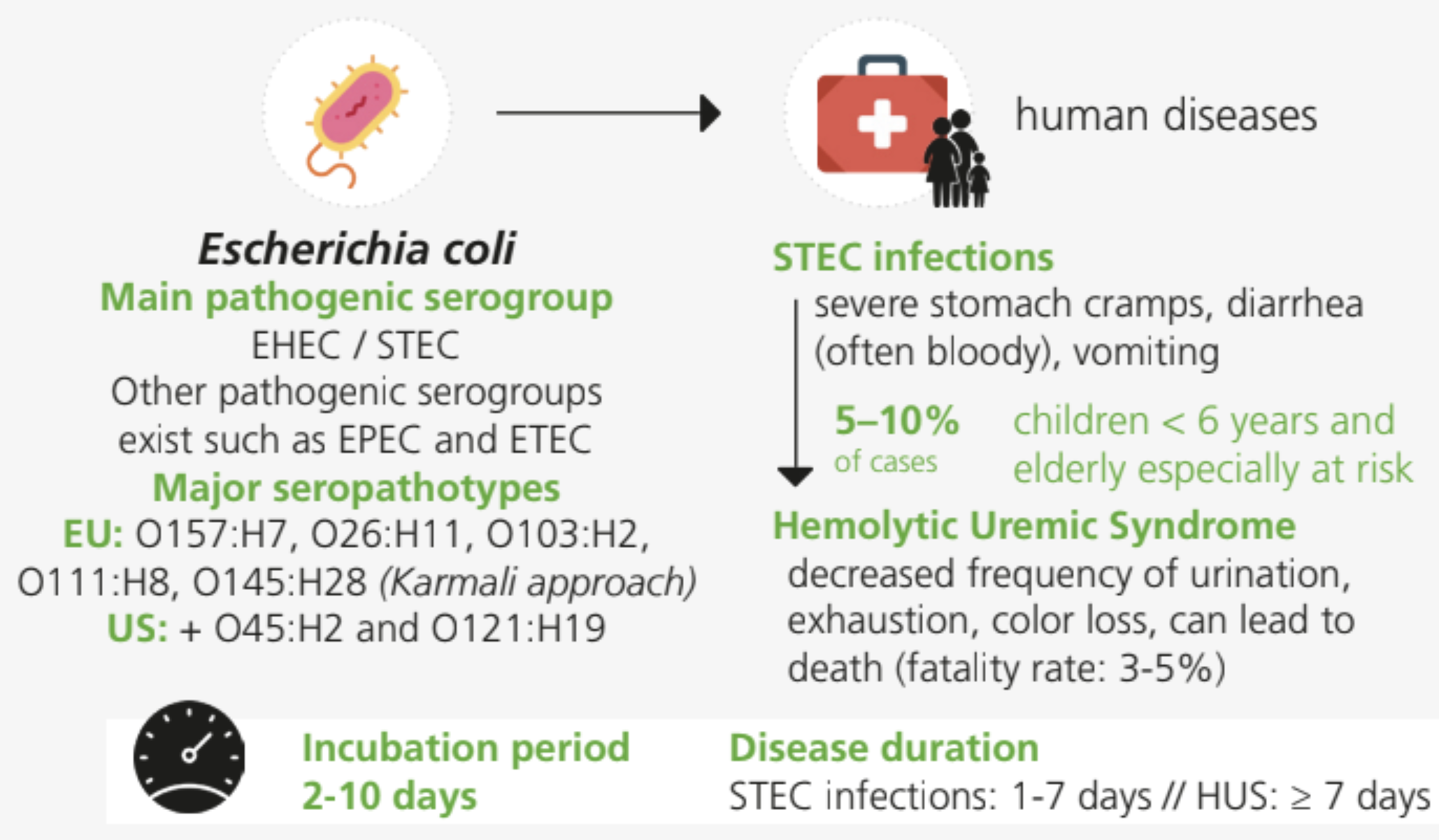definition
Escherichia coli (E. coli) are bacteria living in the lower intestine of warm-blooded organisms, including humans. Although most E. coli strains are harmless, some serogroups or pathotypes can be source of zoonoses, that is diseases or infections naturally transmissible from animals to humans.
E. coli strains producing shiga toxins, encoded by the virulence factors stx1 and stx2, are called Shiga Toxin-Producing E. coli (STEC). EnteroHaemorrhagic E. coli (EHEC) are STEC carrying another virulence factor, eae. In most cases, the illness is self-limiting, but up to 10% of patients may develop a life-threatening disease including haemolytic uraemic syndrome (HUS), especially in young children and the elderly with a case-fatality rate ranging from 3 to 5%.
The major cause of E. coli infections are the consumption and handling of contaminated food and water or, more rarely, the contact with infected animals (notably large ruminants) and between humans. More cases are reported in summer months.

GOING FURTHER
Discover what Mérieux NutriSciences can do about this topic on our website: SERVICE PAGEBLOG ARTICLE You can also get more precise data using our specialized digital tools…


